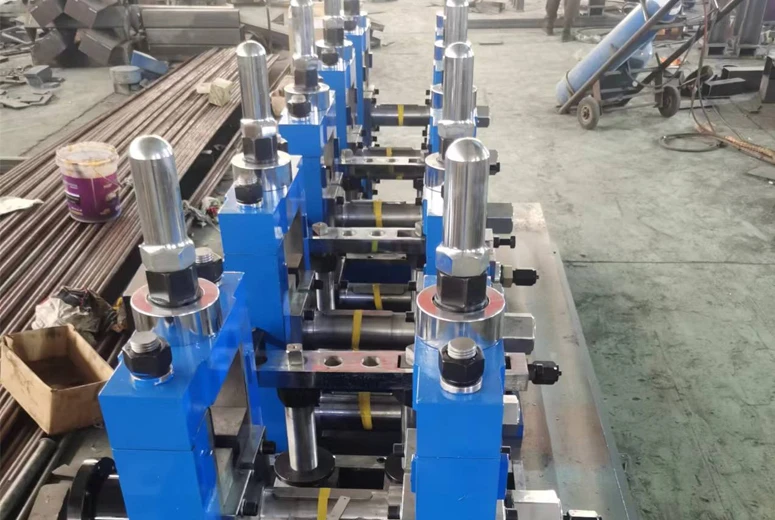ppr pipe line
Understanding the PPR Pipe Pipeline An Essential Component in Modern Infrastructure
The PPR (Polypropylene Random Copolymer) pipe pipeline has emerged as a cornerstone in modern plumbing and construction, owing to its versatility, durability, and unique characteristics. As industries evolve and the demand for reliable piping systems increases, understanding the significance and applications of PPR pipes becomes crucial.
What are PPR Pipes?
PPR pipes are made from polypropylene, a thermoplastic polymer known for its high resistance to heat and chemical corrosion. This makes PPR pipes an ideal choice for a range of applications, from residential water supply systems to industrial piping solutions. The random copolymer structure of PPR gives it superior strength and flexibility compared to other conventional materials like PVC or metal.
Key Advantages of PPR Pipes
One of the most appealing features of PPR pipes is their exceptional thermal resistance. They can handle temperatures up to 95°C (203°F) without compromising structural integrity, making them suitable for hot water applications. Additionally, their smooth inner surface reduces friction, leading to lower energy costs and enhanced flow rates.
Another significant advantage is their resistance to scale build-up, which is a frequent problem in other types of piping materials. This characteristic not only prolongs the lifespan of the piping system but also ensures cleaner and safer water supply.
Furthermore, PPR pipes are lightweight and easy to handle, which facilitates quick installation and reduces labor costs. They are typically joined using heat fusion, which creates a seamless and leak-proof connection, enhancing the overall durability of the pipeline.
ppr pipe line

Environmental Impact and Sustainability
In an age where sustainability is paramount, PPR pipes stand out due to their eco-friendly characteristics. Polypropylene is recyclable, contributing to a circular economy. Furthermore, the manufacturing process of PPR pipes produces fewer emissions compared to traditional materials, making them a more environmentally responsible choice for builders and contractors.
Their longevity also plays a role in reducing waste. Traditional piping solutions often require frequent replacements, whereas PPR's durability translates into less material being sent to landfills over time.
Applications of PPR Pipe Pipelines
The applications for PPR pipes are extensive and varied. They are commonly used in cold and hot water distribution systems in residential buildings, commercial establishments, and industrial facilities. In agriculture, PPR pipes are utilized for irrigation systems, contributing to more efficient water usage.
Moreover, the chemical resistance of PPR pipes makes them ideal for transporting various fluids, including chemicals and wastewater, in industrial settings. Their versatility extends to HVAC systems, where they are used for air conditioning and heating operations.
Conclusion
In conclusion, the PPR pipe pipeline represents a significant advancement in the field of plumbing and construction. With their numerous benefits—including thermal resistance, durability, eco-friendliness, and versatility—PPR pipes are well-suited to meet the demands of modern infrastructure. As industries continue to prioritize sustainability and efficiency, PPR technology will undoubtedly play a vital role in shaping the future of piping solutions. Understanding and adopting PPR pipes can lead to improved systems that not only enhance performance but also align with global efforts to create a more sustainable future. Whether in residential, commercial, or industrial contexts, the PPR pipe pipeline is an integral component that deserves attention and consideration in contemporary infrastructure planning.
-
High Frequency Straight Seam Welded Pipe Production Line-BzZhou Xinghua Machinery Equipment Manufacturing Co., LTD.|line pipe steel&welded gas pipeNewsJul.30,2025
-
High Frequency Straight Seam Welded Pipe Production Line-BzZhou Xinghua Machinery Equipment Manufacturing Co., LTD.|High Precision&Automated SolutionsNewsJul.30,2025
-
High Frequency Straight Seam Welded Pipe Production Line - BzZhou Xinghua Machinery Equipment Manufacturing Co., Ltd.NewsJul.30,2025
-
High Frequency Straight Seam Welded Pipe Production Line-BzZhou Xinghua Machinery Equipment Manufacturing Co., LTD.|Precision Welding, High EfficiencyNewsJul.30,2025
-
High Frequency Straight Seam Welded Pipe Production Line|BzZhou Xinghua|Precision Welding&EfficiencyNewsJul.30,2025
-
High Frequency Straight Seam Welded Pipe Production Line - BzZhou Xinghua|Precision Engineering&EfficiencyNewsJul.30,2025


